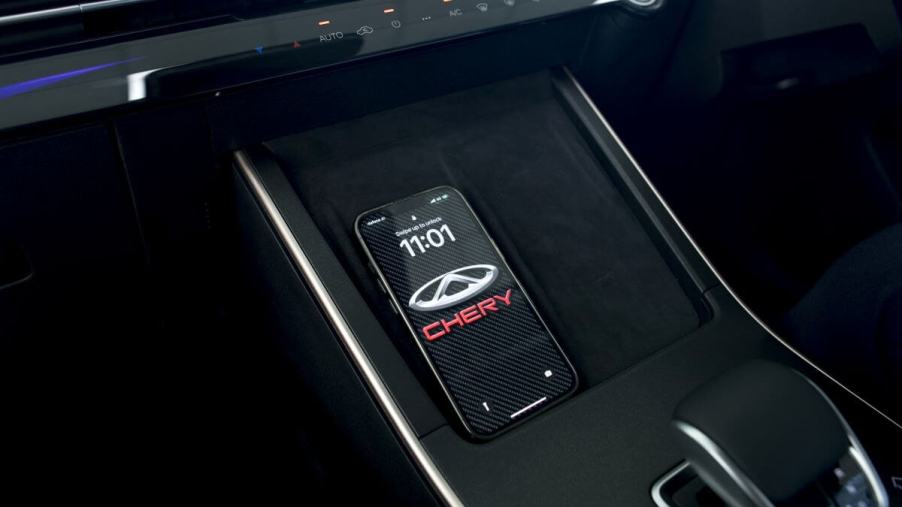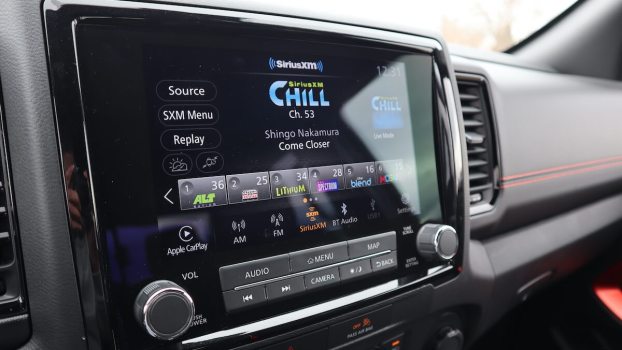
There’s 1 Big Problem With Wireless Phone Chargers in Cars
Many modern cars are marketed as much for their convenient tech and infotainment features as for their pragmaticism, price, and performance. One of the most popular features that has worked its way down to even budget-minded mainstream cars, trucks, and SUVs is wireless charging docks. However, this piece of automotive tech has plenty of recurring problems and one major issue in particular.
How wireless car chargers work
Before diving into the problematic issues of car wireless charging bays, it’s important to note how they work — or at least should work.
Business Insider says wireless charging stations use an electromagnetic coil to create a magnetic field. This allows for the transference of energy that can be received by another coil in a phone, which is then converted to usable energy for the phone’s battery. Wireless car chargers use uniform Qi standards so that regardless of your phone’s make and model, it can receive the charge.
Wireless car chargers: When a convenience becomes a hassle
Wireless charging is an extremely convenient way to instill life into your phone while traveling and, thus, while you aren’t using it. Hopefully not, anyway, keep your eyes on the road. However, often, this supposed convenience can lead to headaches.
The electromagnetic field used to transfer energy is often extremely “small,” so to speak. That’s why you must place your phone directly on top of a wireless charger. However, that’s not easily accomplished, considering many often use thick phone cases or accessories like pop sockets for grip. These pieces of phone kit often impede the electromagnetic field, and as such, it may mitigate charging power and speed or, in many cases, prevent it altogether. In this instance, a wireless charger becomes almost useless unless you decide to remove these accessories on your daily commute or for a road trip and have to reinstall them for the other 22 hours or so of the day.
That’s just not very convenient, is it?
Other car wireless charging issues
Even if charge field impediments aren’t an issue, there are other annoyances, like getting the charge to establish in the first place. If you have an older phone, it might not be compatible with the car’s charger. Your phone’s software may need to be updated to receive a charge, or its settings must be adjusted to allow wireless energy transference. And, that’s if you can get your phone on the bay or have it stay in place.
You can try re-aligning the phone to ensure it’s in contact with the charging dock, but this isn’t always easy when the bay is crammed under the dash and is only accessible through a thin slot, requiring an intense finger workout and awkward finagling. Another annoyance is when your phone won’t stay on the pad. Cars tend to move, after all, and sometimes, the designs of the docks seemingly forget that. Thus, your phone slides around, interrupting the charge or “disconnecting” it completely under heavy acceleration or turning. You may only notice this when you get to your destination and find your battery was never being re-juiced because, at best, most cars only indicate your phone is charging with a muted “ding” from the speakers or with a small light, one you shouldn’t see as your eyes will be on the road ahead.
There are also some instances where a car has wireless charging but not wireless Apple CarPlay or Android Auto connectivity. The Hyundai Santa Fe Calligraphy is one example — there’s a charging pad, but if you want to use one of these services, you’ll need a wired connection anyway.
Finally, your phone’s size could completely negate the convenience of a car’s charging pad. The author of this article tests several dozen new models a year, most of which feature wireless charging. However, rare is the docking station or pad that can even accommodate my sizeable Samsung Galaxy Note 8 (judge this choice all you like).
Even if you aren’t afflicted with any of these issues in your car, you’ll probably find that wireless chargers aren’t particularly effective. They transfer energy is done at a snail’s pace compared to wired, wall-mounted chargers and suck a lot of energy from your car in the process. This can be especially concerning in all-electric models when the car’s battery runs low on charge.
In any of these instances, wireless car charging becomes far more of a hassle than it’s worth.
So, if you like the idea of having a wireless charging bay in your next ride, and why wouldn’t you, given the on-paper convenience, bring your phone along for the test drive to see if it actually works with your phone. Or, find out if it’s just a big void in the center console/stack where you can’t place metal objects.




